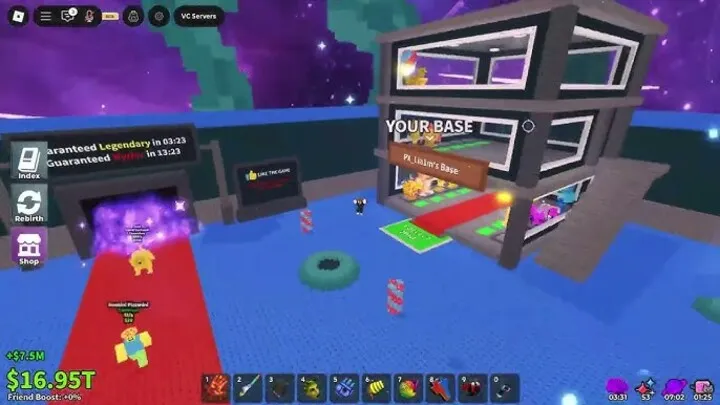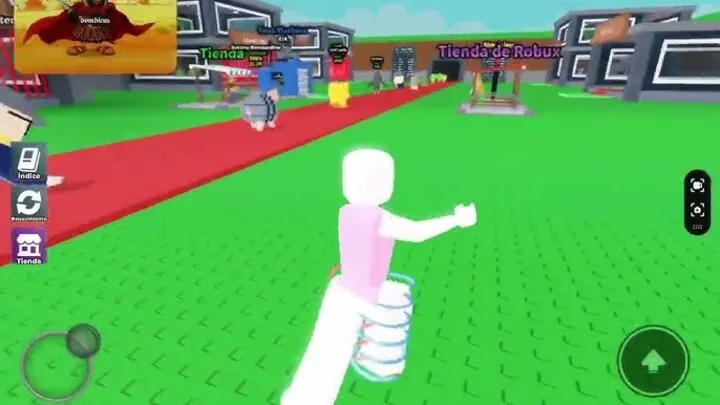Introduction
Steal a Brainrot is not just another chaotic indie game—it is an experience that thrives on unpredictability, absurd mechanics, and the raw thrill of adapting to rapidly changing conditions. Unlike survival titles with structured progressions, this game embraces randomness as its core identity. Players are thrown into a world where every decision can backfire spectacularly, every resource can turn into a liability, and the mysterious "brainrot" mechanic ensures that no two matches feel the same.
This guide is designed to provide not only surface-level strategies but also deep insights into how to survive, thrive, and ultimately win in Steal a Brainrot. From early-game resource management to advanced tactics for manipulating the brainrot system, we’ll walk through everything step by step. The ultimate goal is to help you master chaos instead of falling victim to it.
1. Understanding the Core Mechanics
The first step in Steal a Brainrot mastery is grasping its underlying systems.
At its heart, the game revolves around stealing resources, defending what you have, and managing brainrot levels. Every round operates like a mini-battle, where unpredictability dictates your survival. Players collect items, sabotage opponents, and fortify bases, all while avoiding the crippling effects of brainrot.

Brainrot itself isn’t a typical debuff—it is the wild card that defines the game. It distorts perception, warps rules, and introduces hallucinations that can trick even veteran players. Success depends on knowing when to embrace it and when to resist.
2. Early Game Strategy
The first few minutes set the foundation for survival.
- Focus on Essentials: Secure at least one weapon and basic supplies. Don’t overextend too soon.
- Stay Hidden: Early aggression usually paints you as a target.
- Light Brainrot Exposure: Sometimes minor brainrot effects can give you useful distractions, making opponents more vulnerable.
Treat the early game as preparation, not domination. The more stable your base and supplies, the better your mid-game flexibility.
3. Resource Gathering and Management
Resources in Steal a Brainrot are more diverse than in most survival games.
- Standard Items: Health kits, food, and crafting materials.
- Chaos Collectibles: Odd items that can unleash random effects—both beneficial and destructive.
- Brainrot Tokens: Powerful yet dangerous. Too many, too quickly, will overwhelm you.
The trick is to strike balance. A player who hoards too much may suffer massive debuffs, while one who gathers too little risks being unprepared for the late game.
4. Building Your Base of Operations
A stronghold is essential for resource safety.
- Choose Wisely: Hideouts near choke points or natural barriers work best.
- Use Illusions: Set traps, plant fake brainrot tokens, and create distractions.
- Upgrade Incrementally: Avoid building flashy bases that attract unwanted attention.
Your base should be more about deterrence than fortification. In Steal a Brainrot, stealth often wins over brute force.
5. Mastering the Brainrot Mechanic
Brainrot is the defining feature of the game. It appears in stages:
- Mild Brainrot: Strange noises, visual warping—disorienting but manageable.
- Moderate Brainrot: Inverted controls, unpredictable item use.
- Severe Brainrot: Hallucinated enemies, shifting maps, or random teleports.
The secret? Experienced players weaponize brainrot. By planting tokens in opponents’ paths or inducing moderate brainrot at key moments, you can destabilize others while staying just below your own threshold.

6. Dealing with Opponents
No two opponents are the same, and your strategy must adapt.
- Aggressive Players: Set ambushes and traps—don’t fight on their terms.
- Stealth Players: Watch their trails. Subtle footprints or missing resources give them away.
- Chaos Players: Treat them as wildcards. Lure them into overexposing themselves with brainrot tokens.
Victory isn’t always about elimination—it’s about surviving longer and smarter than everyone else.
7. Advanced Combat Techniques
When fighting is unavoidable, precision matters.
- Weapon Variety: Mix ranged weapons for harassment with melee tools for finishing.
- Mobility: Constant movement reduces vulnerability to hallucinations and ranged fire.
- Environment as Weapon: Trick enemies into traps or brainrot-heavy areas.
In combat, unpredictability is your ally. Make opponents second-guess their every move.
8. Navigating the Map
The game’s maps shift constantly, influenced by brainrot.
- Dynamic Layouts: No layout stays permanent; memorize patterns, not details.
- Shortcuts and Portals: Learn hidden passages that can save you in emergencies.
- Danger Zones: Avoid areas with heavy brainrot unless you’re prepared to risk it all.
The best players don’t just move through the map—they bend it to their advantage.
9. Late-Game Survival
By the end, chaos reaches its peak.
- Stockpile Wisely: Early resource savings matter more than last-minute grabs.
- Force Opponents’ Brainrot: Encourage others to suffer heavy debuffs while you manage your own exposure.
- Stay Adaptive: At this stage, rigidity leads to failure. The unpredictable always wins.
Late-game survival is about staying calm when everyone else is in panic mode.
10. The Path to Victory
Winning isn’t just about brute force. It’s about who adapts best to the madness.
- Outlast through stealth and resource control.
- Outsmart by weaponizing brainrot.
- Overpower only when necessary.
Those who win are not the strongest or the fastest—they’re the most adaptable.

Conclusion
Steal a Brainrot is built on one principle: embrace the unexpected. Mastering this game requires more than memorization—it demands adaptability, creativity, and a willingness to dive into chaos without losing focus. Whether you’re manipulating brainrot to sabotage opponents or carefully balancing resources to survive the late game, every decision shapes the outcome.
In the end, victory belongs to those who stop fearing chaos and instead wield it as their greatest weapon.

















